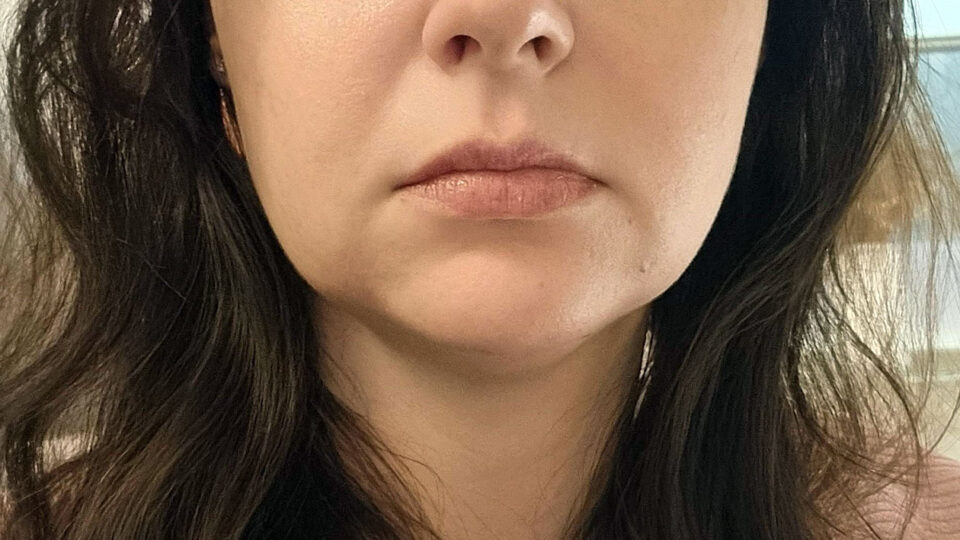What are Jowls?
Jowls are a common facial feature associated with aging, characterised by sagging skin and fat deposits that droop below the jawline. They are typically described as:
- Bags of skin along the jawline that sag or droop lower than the jaw.
- Loose skin and fat deposits that create a poorly defined jawline or double chin-like appearance.
- Excess droopy skin that collects along the lower part of the face, specifically along the jawline and below the cheeks.
Jowls are situated entirely in the supra-platysmal plane, consisting of redundant subcutaneous tissue with overlying skin. The maximal jowl fullness corresponds with the area over the posterior end of the mandibular ligament.
Formation Process
As we age, our skin loses elasticity and begins to sag, often resulting in jowls.
The specific cause of jowl formation is skin thinning and loss of elasticity due to a decrease in collagen and elastin production.
Over time, the subcutaneous connective tissue, which allows for exceptional mobility without laxity in youth, lengthens with aging, resulting in laxity and the formation of jowls.
Jowls are a natural part of the aging process and can vary in severity from person to person. They affect the overall appearance of the face and contribute to an older-looking appearance.
What Causes Jowls?
Jowls, characterised by sagging skin below the chin or jawline, are primarily caused by the natural aging process. However, several factors contribute to their development and prominence:
Natural Aging Process
As we age, our skin undergoes significant changes:
- Loss of elasticity: The skin produces less collagen and elastin, crucial proteins that provide firmness and elasticity.
- Thinning skin: The skin becomes thinner and less hydrated over time.
- Skeletal changes: Facial bones, including the jaw and cheekbones, gradually diminish and flatten.
- Fat redistribution: The fat pads in the mid-face deflate and descend.
Environmental and Lifestyle Factors
Several external factors can accelerate jowl formation:
- Sun exposure: Prolonged exposure to UV rays damages collagen and elastin, hastening skin aging.
- Smoking: Nicotine and other chemicals in cigarettes damage collagen and elastin, and reduce blood circulation to the skin.
- Weight fluctuations: Significant weight gain stretches the skin, while subsequent weight loss can leave it sagging.
- “Tech neck”: Constantly looking down at phones or computers can cause the neck skin to lose elasticity.
Genetic and Individual Factors
Some people are more prone to developing jowls due to:
- Genetics: Family history can influence the likelihood and timing of jowl formation.
- Facial structure: Certain facial shapes may be more susceptible to jowl development.
- Skin type: People with thicker skin or more facial fat may develop less pronounced jowls.
Other Contributing Factors
- Gravity: Over time, gravity’s constant pull contributes to the downward sagging of facial tissues.
- Repetitive facial expressions: Certain expressions can stretch out the face or neck skin over time.
- Stress and poor diet: Can accelerate skin aging and decrease elasticity.
Jowl Treatment Options
Most people assume surgery is the only treatment option for jowls; however, several effective non-surgical treatments can help address jowls, offering alternatives to more invasive procedures. Here are some of the best options:
Jawline Defining Treatments
Jawline Defining Treatments can minimise jowls by adding volume and lift to the jawline and chin. Even in full facial rejuvenating treatments, strategically placed, thicker products along the jawline are key for addressing sagging skin and restoring definition. This creates a sharper, more contoured lower face by filling out loose skin and adding structural support. They are a popular and effective treatment for jowls:
- They help restore volume and lift sagging skin.
- Defining treatment products can be strategically injected to support the jawline and cheeks.
- Results are immediate and can last 12-18 months or longer.
Other types of advanced cosmetic treatments include:
- Gel-based skin boosters and collagen-stimulating treatments
- Polynucleotide-based therapies and bio-remodelling formulations
Results are slower in onset, up to 4-6 weeks and can last 12-18 months or longer.
Wrinkle Relaxing Treatments
Wrinkle-reducing treatments can smooth, relax, and nip in the sagging muscle, causing the overlying skin and the fat pad to droop along the jawline.
Sometimes, the neck bands attached to this jawline muscle are treated if they are dragging down the jowl further. The results in suitable candidates can help improve the overall jawline and neck appearance. The treatment is referred to as Nefertiti!
Relaxing treatments take 7-10 days to activate fully and can last 4-6 months.
Genius RF Microneedling
Genius RF Microneedling is a state-of-the-art treatment that combines microneedling with radiofrequency energy:
- It uses 49 insulated gold-plated microneedles to deliver RF energy deep into the skin.
- The treatment stimulates collagen and elastin production.
- It’s effective for skin tightening, wrinkle reduction, and overall skin rejuvenation.
- Results continue to improve for months after treatment completion.
When considering these treatments, it’s essential to consult with one of the Registered Nurses at The Cosmetic Studio Noosa to determine the best approach for your specific case.
They can assess your skin condition and recommend the most suitable treatment or combination of treatments to achieve your desired results.
